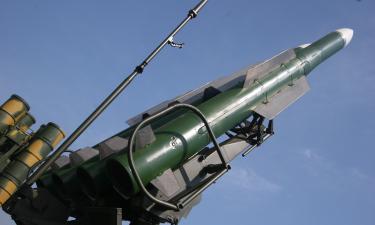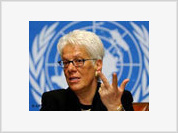Educators to teach dangerous of old explosives in Afghan
The schoolchildren listen to the story of Massoud, 11, whose left leg was blown off above the knee 3 years ago. This is a lecture on the dangerous of land mines.
"When I arrived over the top of the hill, suddenly a bomb exploded," the sweet-faced boy says. "No one would come near me because they were afraid another mine would explode. Then I crawled out of the mined area."
After a quarter century of war, Afghanistan is still littered with millions of land mines and other unexploded ordnance, and more mines are being planted in regions of the south where a Taliban-led guerrilla war against NATO forces is escalating.
Yet as Afghanistan marks International Mine Awareness Day on Wednesday, there is some cause for optimism. Accident rates have declined dramatically thanks to the imaginative and culturally sensitive efforts of organizations such as OMAR - a mine-clearing NGO that recruited Massoud for the lesson in a Kabul mosque.
His audience, a classroom full of boys about his age, listens, their mouths agape. Their wide eyes move from his face to the artificial leg under his gray tunic.
Massoud, who like many Afghans uses only one name, is one of nearly 800 people maimed and killed by the debris of war in Afghanistan every year. That's less than half the number five years ago when the country was embarking on reconstruction after the fall of the Taliban, the Islamic movement routed by the U.S. and its Afghan allies for hosting Osama bin Laden.
While nothing conveys the danger of land mines quite like a personal account, Massoud's macabre show-and-tell is just one small moment in a campaign that owes much of its success to its sensitivity to conservative Islam.
The U.N. has been demining Afghanistan since 1989, spending an estimated US$300 million (EUR225 million). It now believes it has cleared more than 60 percent of land sown with mines since the Soviet invasion in 1979. But as many as 4.2 million Afghans still live in suspected mined areas, according to U.N. statistics.
To teach the dangers, educators must tiptoe through a dizzying list of no-no's in a society hypersensitive about portraying even modestly dressed women and girls. In some conservative parts of the country, just photos of human forms and video, which were forbidden by the Taliban during their repressive rule, are also frowned upon.
"Some people object to seeing girls in any of our materials. They don't object to boys, but they do object to girls," says Susan Helseth, an adviser for the U.N. Mine Action Center for Afghanistan who oversees the development of education materials.
The Association for Aid and Relief, Japan (AAR-Japan) had to redo a mine awarenessbooklet whose cover showed a girl and boy sitting together in a class. An Afghan review committee said children of that age should be segregated by sex, so it was reprinted with boys and girls on separate pages.
AAR-Japan also uses two mobile cinemas run on generators to show villagers an eight-minute mine awareness video called "The Way to Home" _ but not in the south, where conservative Muslims reject the idea of screening movies, says the group's director Koji Miyazaki.
There are also concerns that the actress in the film, Marina Golbahari, may cause anger in former Taliban strongholds because of her role in the award-winning 2003 movie "Osama," he says. The movie portrayed some Taliban as misogynistic pedophiles.
The communications firm Sayara, which works with the aid organization Handicap International, uses mobile theater to get its message across, although without any female characters.
The firm's director Antoine Heudre says it's a good way to reach illiterate people, particularly in villages that lack electricity to run televisions. Some 86 percent of women and 56 percent of men in Afghanistan cannot read.
Despite the many cultural and educational challenges, the mine awareness message, combined with the efforts of deminers, appears to be working. According to the International Committee for the Red Cross, there were 771 victims of mine and ordnance accidents in 2006 - down from 1,717 victims in 2002.
In all, mines and unexploded ordnance have killed at least 942 people and injured 4,543 in the past five years. Most of the victims are male.
Over the years, simple color-coded messages have been painted on rocks, houses and mountains around the country by deminers: red for danger, white for a cleared area. Also, mine-risk educators use painted diagrams to warn children about land mines, cluster bombs and other explosives.
Despite such powerful education efforts, more land mine accidents appear inevitable. Nearly 90 percent of accidents happen in unmarked areas, and it would take decades to clear Afghanistan entirely - and that is without factoring in the ongoing violence.
Mullah Mahmood, a Taliban commander in the southern province of Helmand, told The Associated Press that militants have planted new land mines as part of their armed campaign against heavily armed NATO forces.
Susan Helseth of UNMACA anticipates the conflict in the south will just add to the problem.
"A portion of what is shot, fired or dropped does not explode," she said. "So there will be new unexploded ordnance and remnants of war."
Subscribe to Pravda.Ru Telegram channel, Facebook, RSS!




